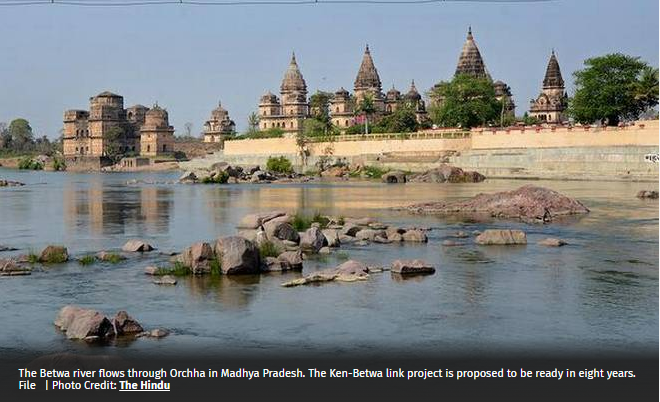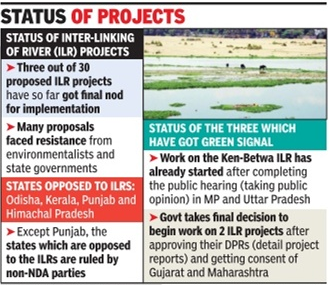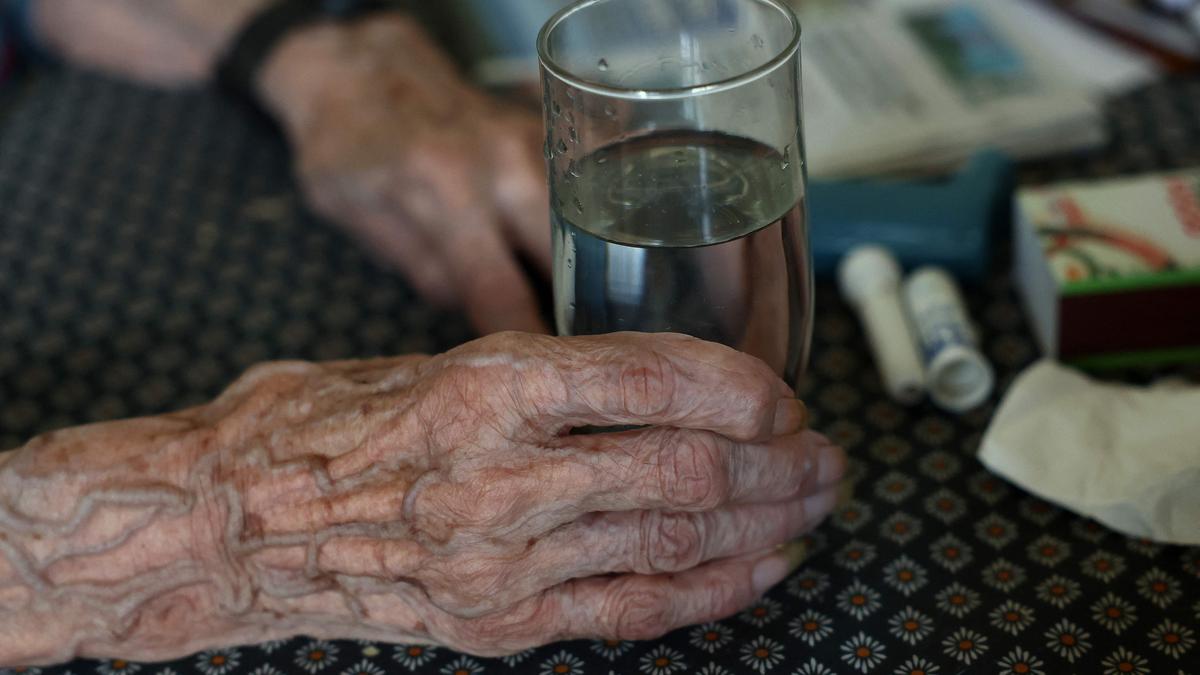Description

Figure 1: No Copyright Infringement Intended
Context:
- The Union Cabinet approved the funding and implementation of the Ken-Betwa river interlinking project at a cost of ₹44,605 crore at the 2020-21 price level.
- The Centre would fund ₹39,317 crore for the project, with ₹36,290 crore as a grant and ₹3,027 crore as a loan.
What is the Ken Betwa Link Project?
- The Ken-Betwa Link Project is the first project under the National Perspective Plan for interlinking of rivers. Under this project, water from the Ken river will be transferred to the Betwa river.Both these rivers are tributaries of river Yamuna.
- The Ken-Betwa Link Project has two phases. Under Phase-I, one of the components Daudhan dam complexand its appurtenances like Low Level Tunnel, High Level Tunnel, Ken-Betwa link canal and Power houses will be completed.
- While in the Phase-II, three components — Lower Orr dam, Bina complex project and Kotha barrage— will be constructed.
Which region will get the benefits of the KBLP?
- The Ken-Betwa Link Project lies in Bundelkhand, a drought-prone region, which spreads across 13 districts of Uttar Pradesh and Madhya Pradesh.
- According to the Jal Shakti Ministry, the project will be of immense benefit to the water-starved region of Bundelkhand.
- It will pave the way for more interlinking of river projects to ensure that scarcity of water does not become an inhibitorfor development in the country.
Will the project affect the Panna tiger reserve?
- Out of the 6,017 ha of forest areacoming under submergence of Daudhan dam of Ken Betwa Link Project, 4,206 ha of area lies within the core tiger habitat of Panna Tiger Reserve.
About Interlinking of Water:
Since the 1980s, the interlinking project has been managed by India’s National Water Development Agency (NWDA) under the Ministry of Water Resources.



Components of the Project:
- Northern Himalayan Rivers interlink component.
- A southern peninsular component.
- An intra-State rivers linking component.
Pros of interlinking of water:
- Interlinking of rivers will help areas having shortage of water areas to have water throughout the year.
- This will cut farmers dependence on monsoon rains by bringing millions of hectares of cultivatable land under irrigation.
- Crop productivity would increase and so would revenues for the State.
- The river linking project will ease the water shortages in western and southern India while mitigating the impacts of recurrent floods in eastern India.
- India needs clean energy to fuel its development processes, and river water can be leveraged for this.
- Fulfilling water needs impact socio-economic life of people, which will help to end poverty.
- Potential benefits to transportation through navigation, as well as broadening income sources in rural areas through fishing.
Challenges:
- Interlinking of rivers is a very expensive proposal.
- The river interlinking project will adversely affect land, forests, biodiversity, rivers and the livelihood of millions of people.
- The Ken-Betwa link threatens about 200 sq. km of the Panna tiger reserve.
- Interlinking of rivers will lead to destruction of forests, wetlands and local water bodies, which are major groundwater recharge mechanisms.
- Less positive experience that other countries have, like diversion of Amu Darya and the Syr Darya or the Australia’s experiments in its Murray Darling basin.
- It causes massive displacement of people. Huge burden on the government to deal with the issue of rehabilitation of displaced people.
- Due to interlinking of rivers, there will be decrease in the amount of fresh water entering seas and this will cause a serious threat to the marine life.
- The Shah committee pointed out that the linking of rivers will affect natural supply of nutrients for agricultural lands through curtailing flooding of downstream areas.
Way Forward:
- Each and every project must be taken up on case to case basis.
- Development of national waterways must be considered along with it.














